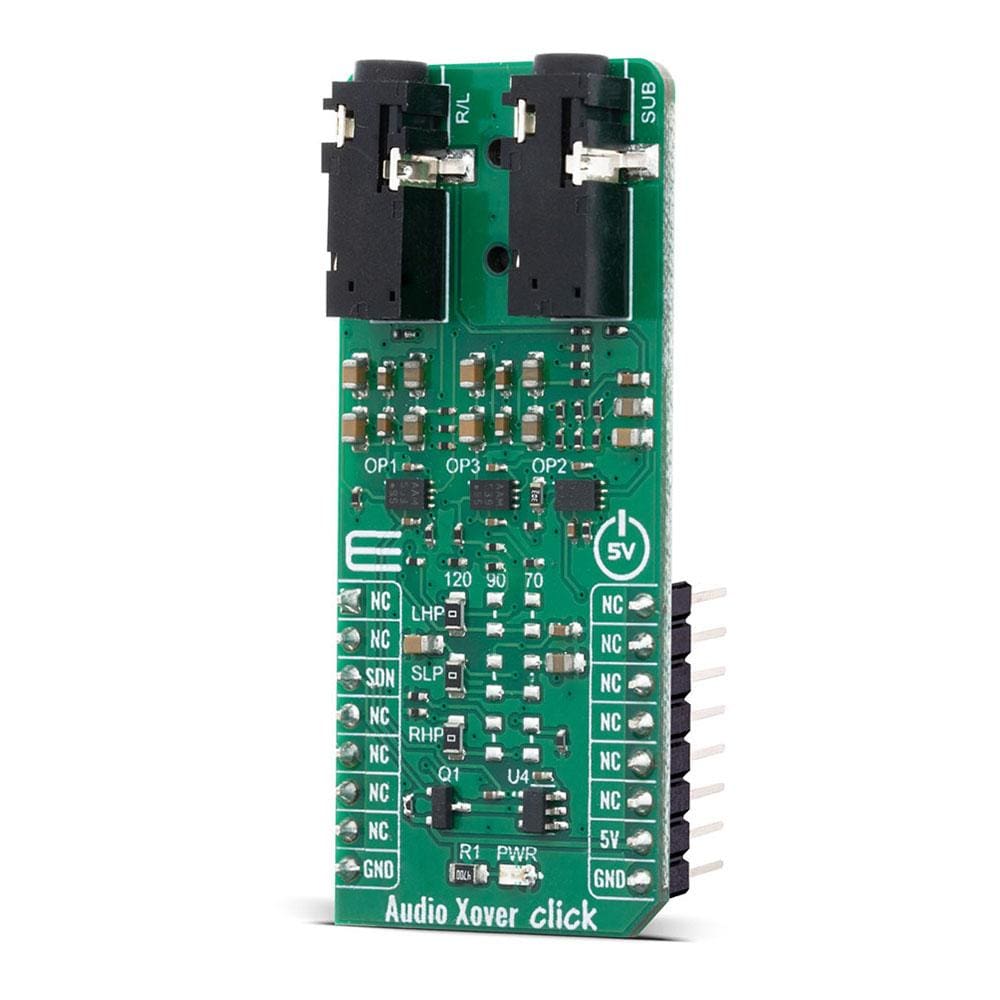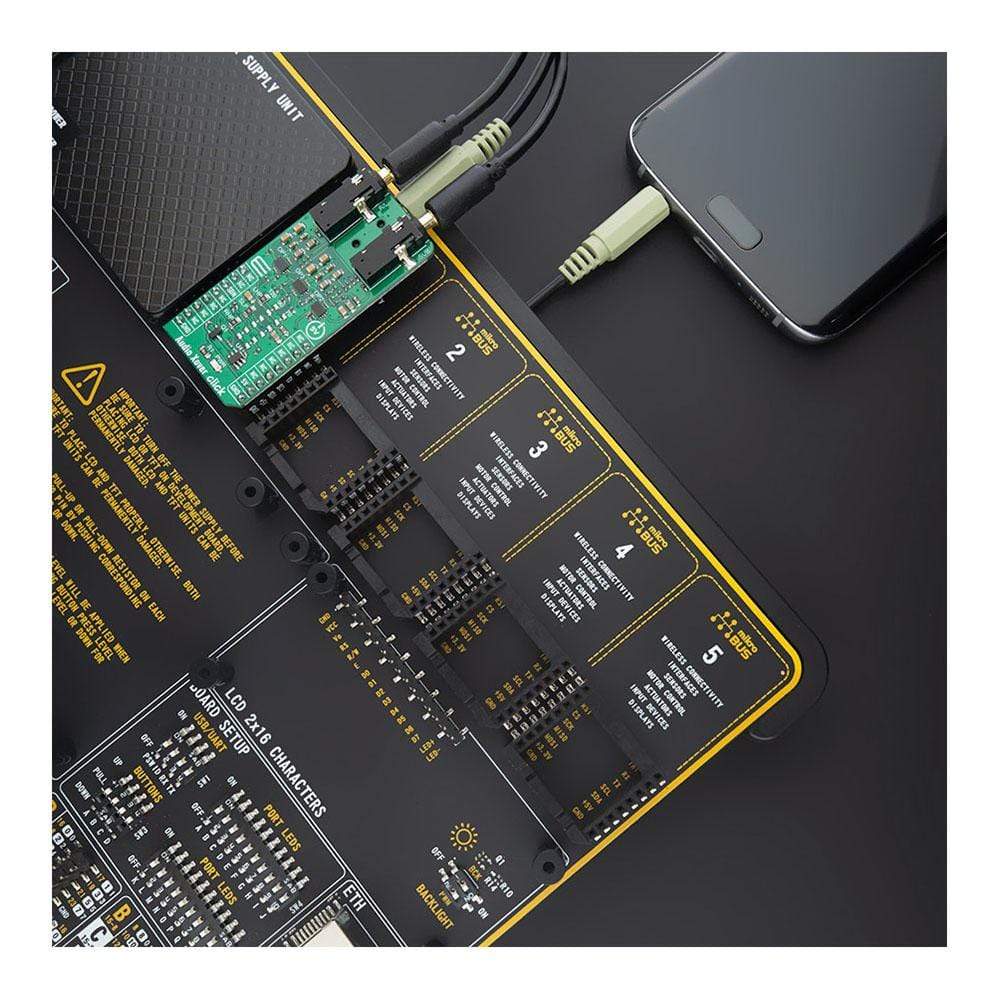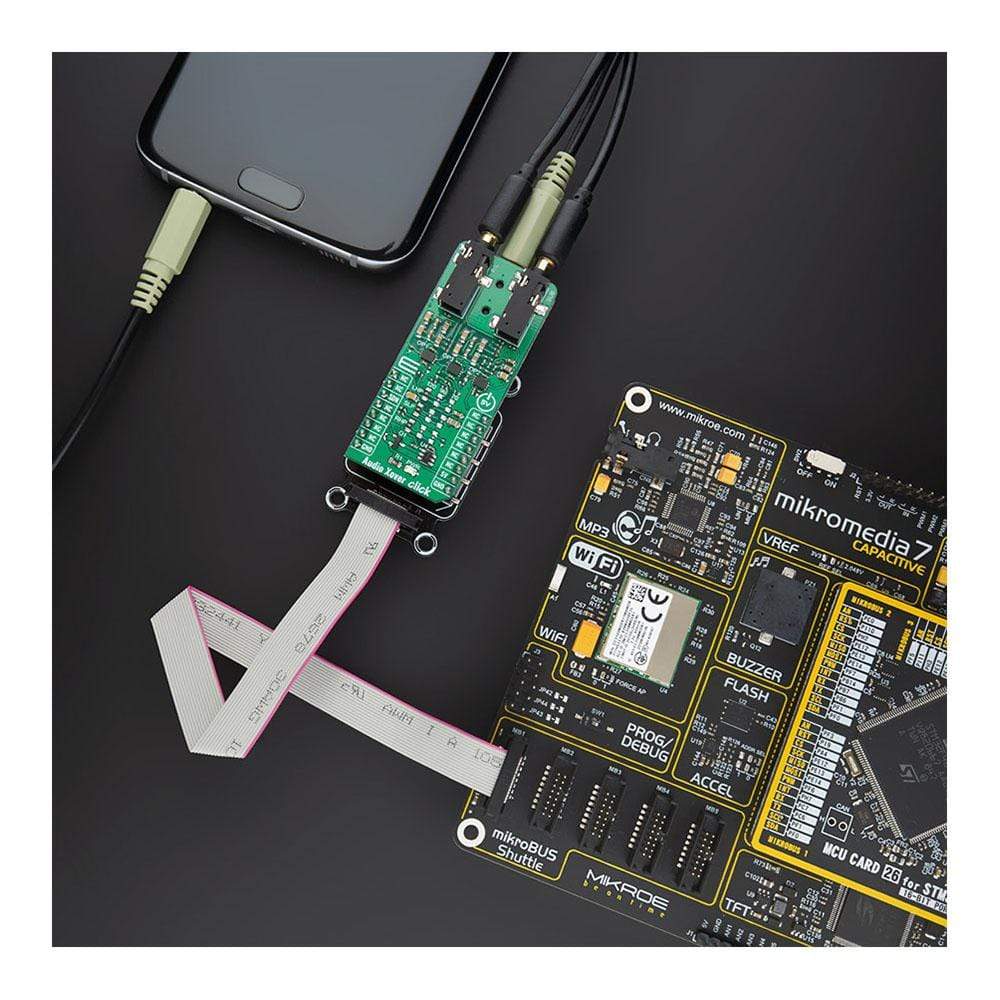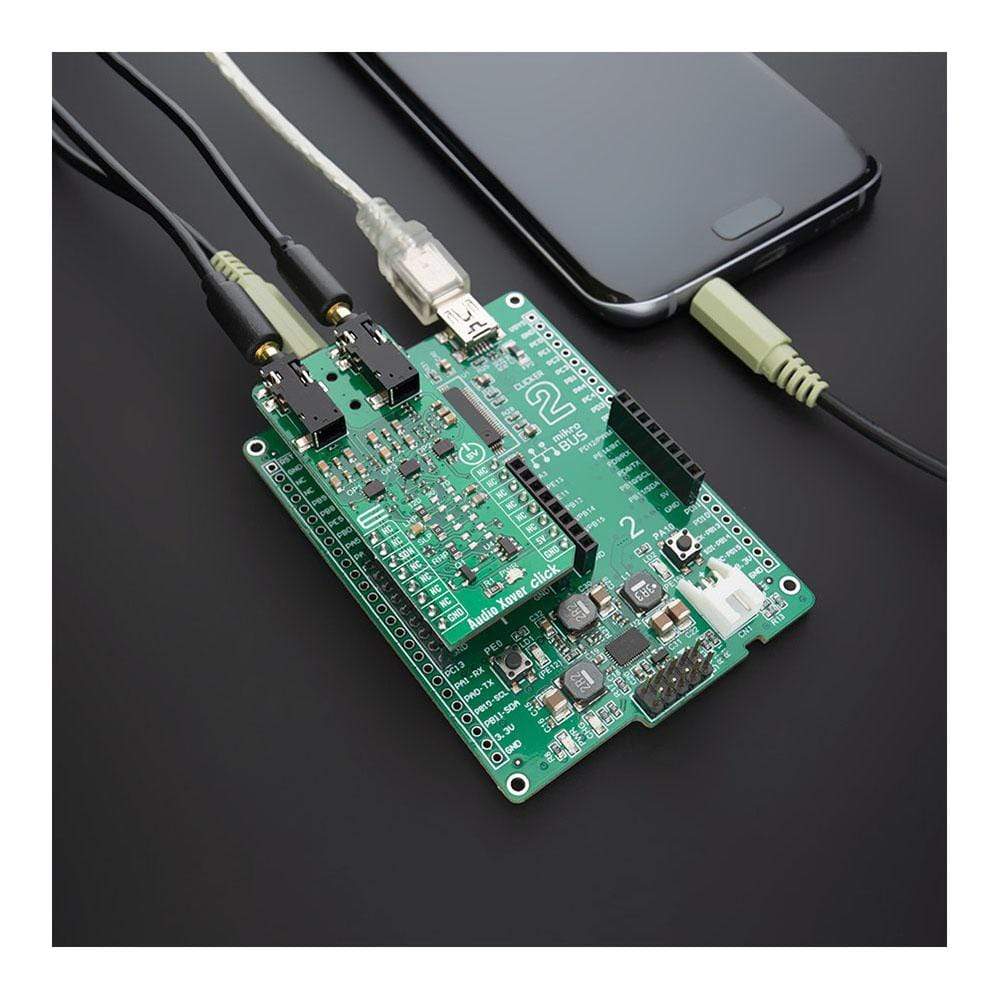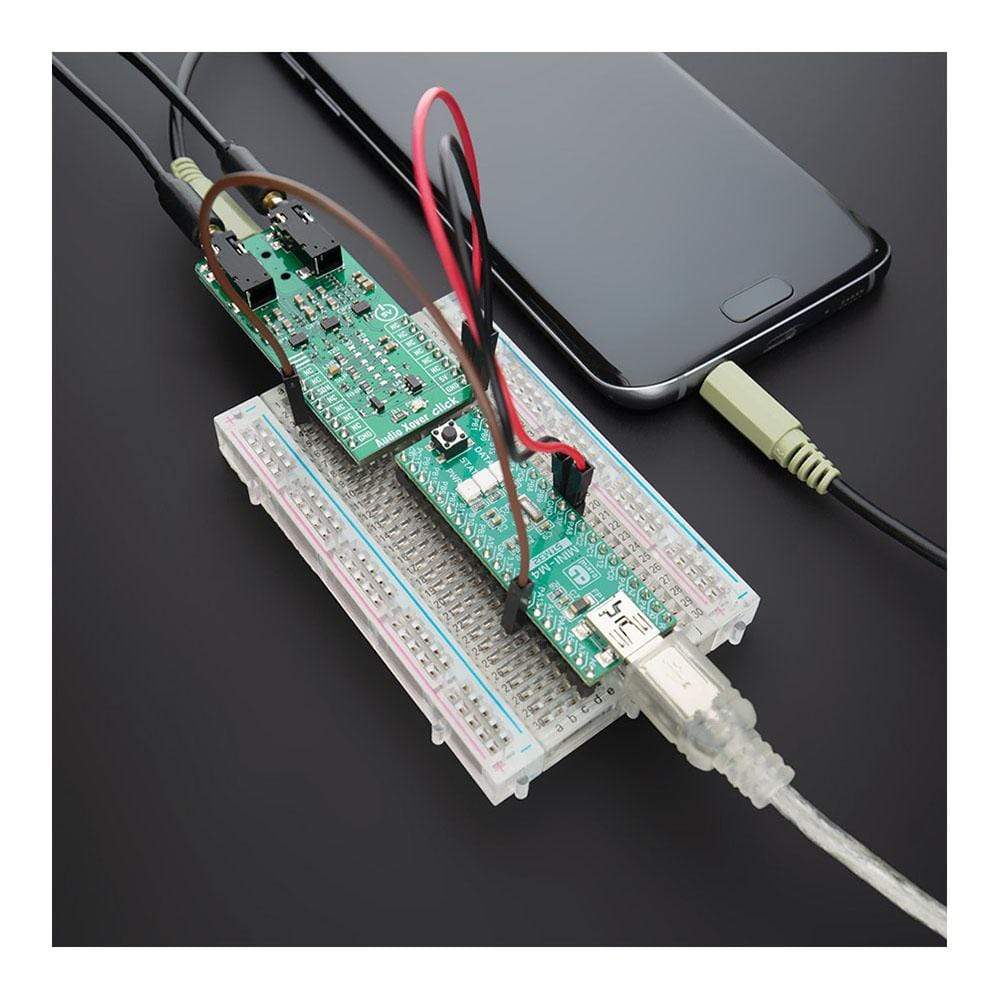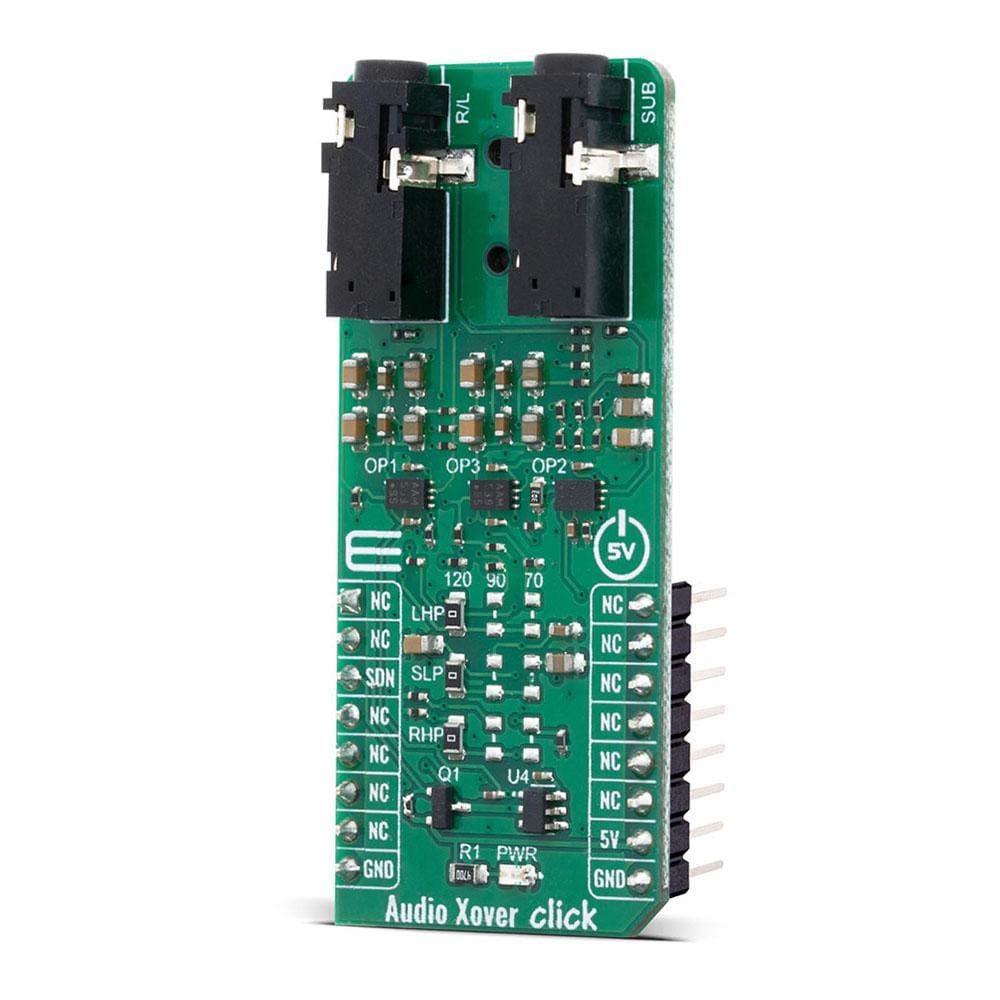
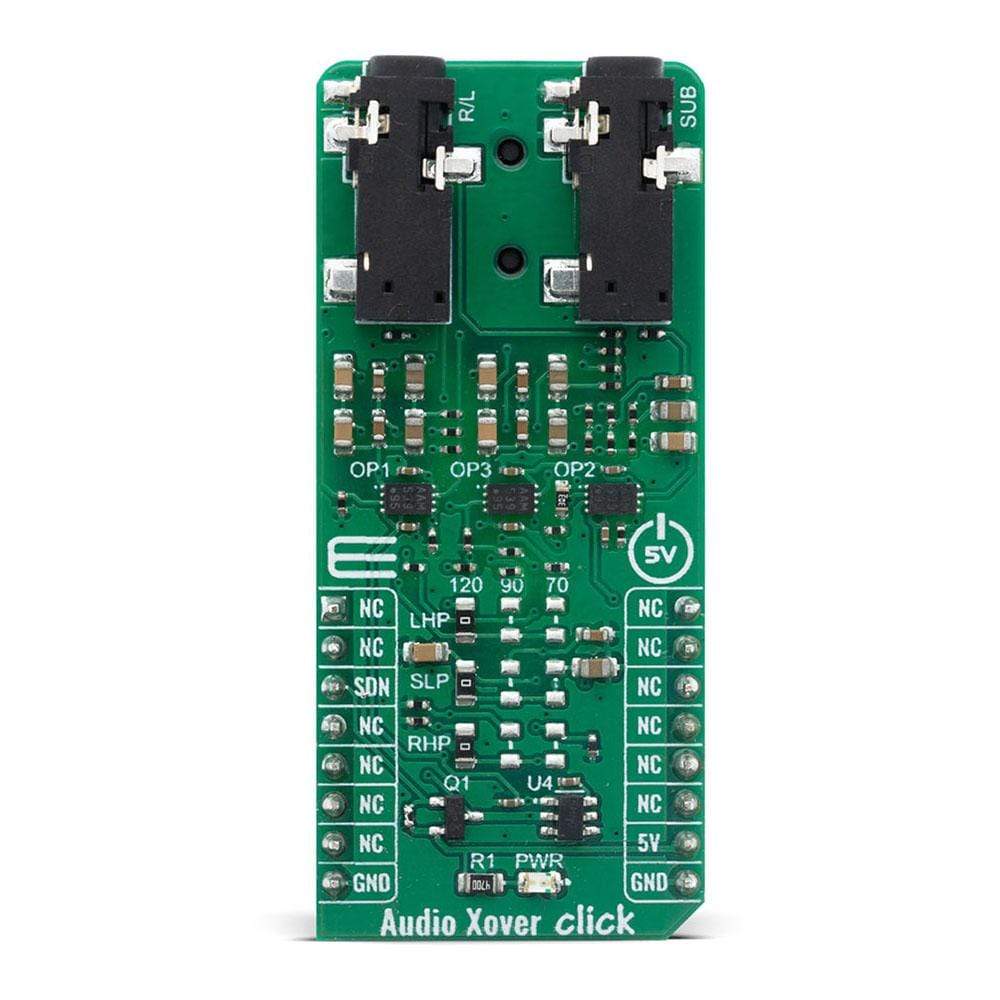
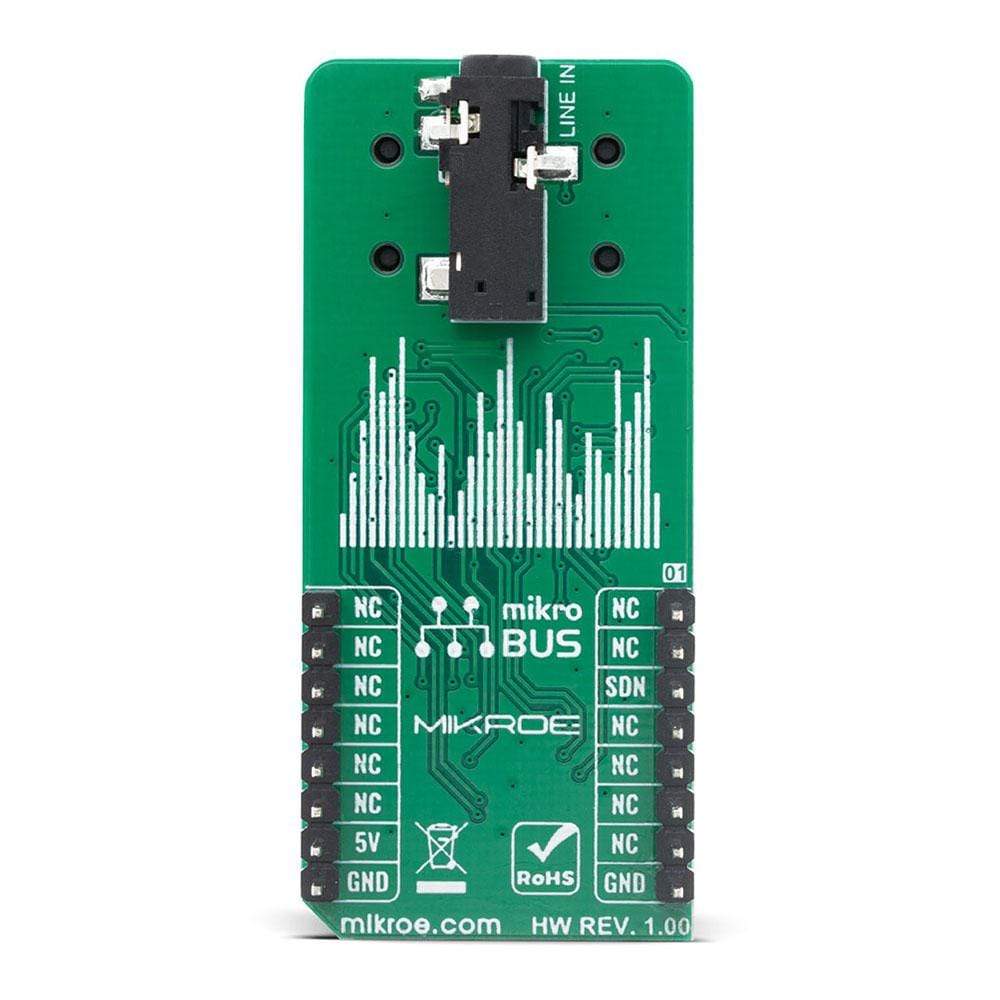
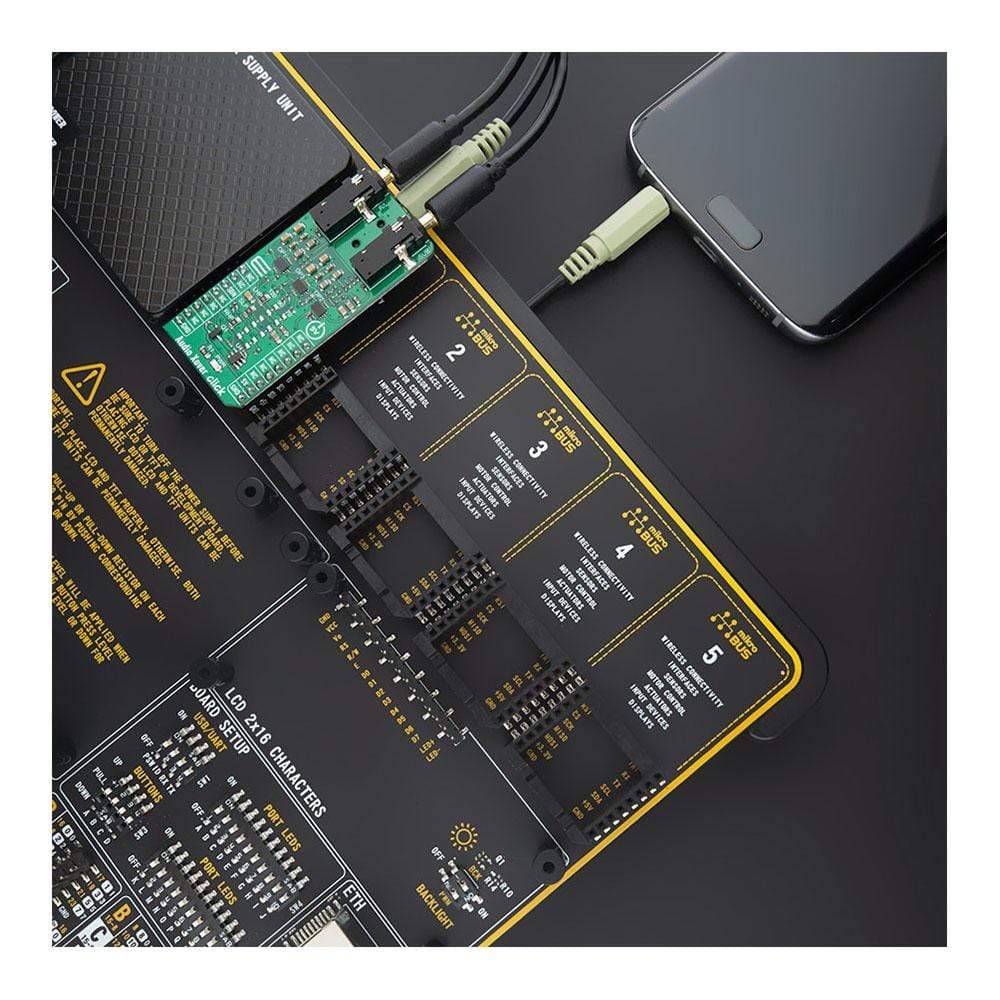
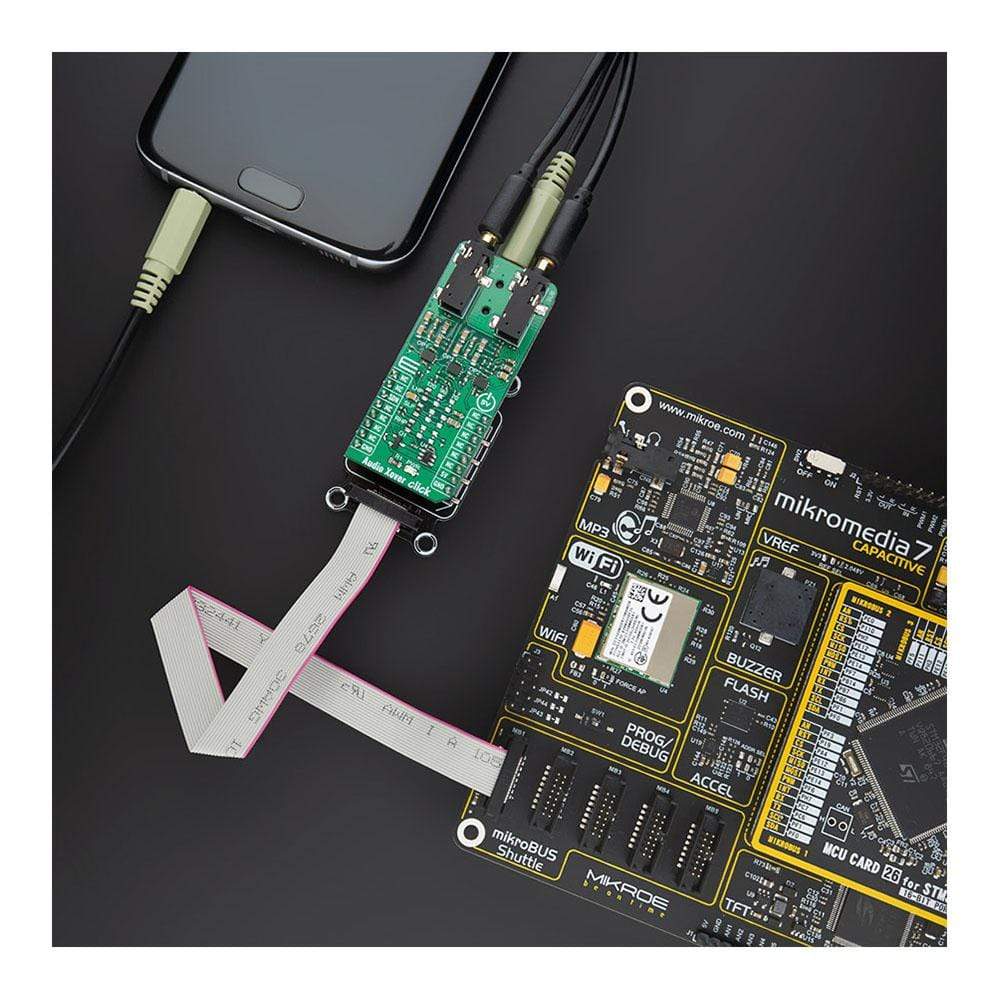
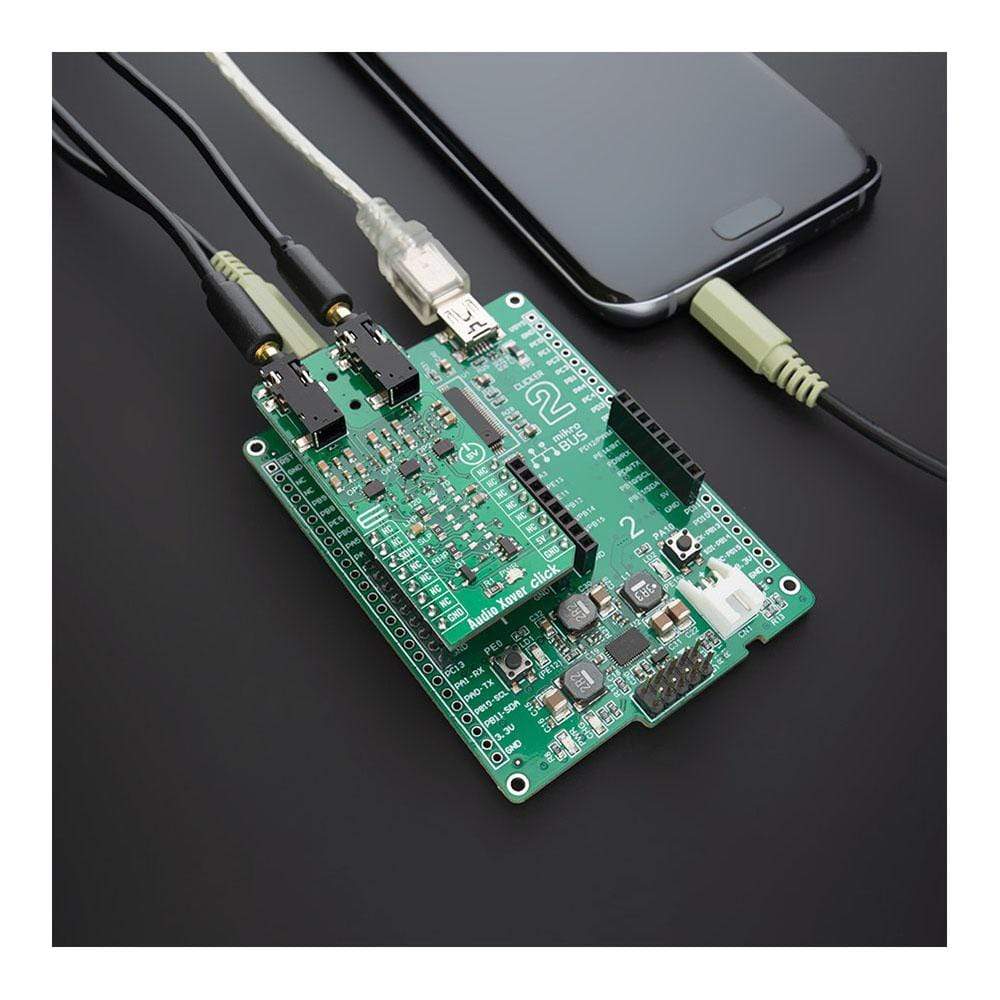
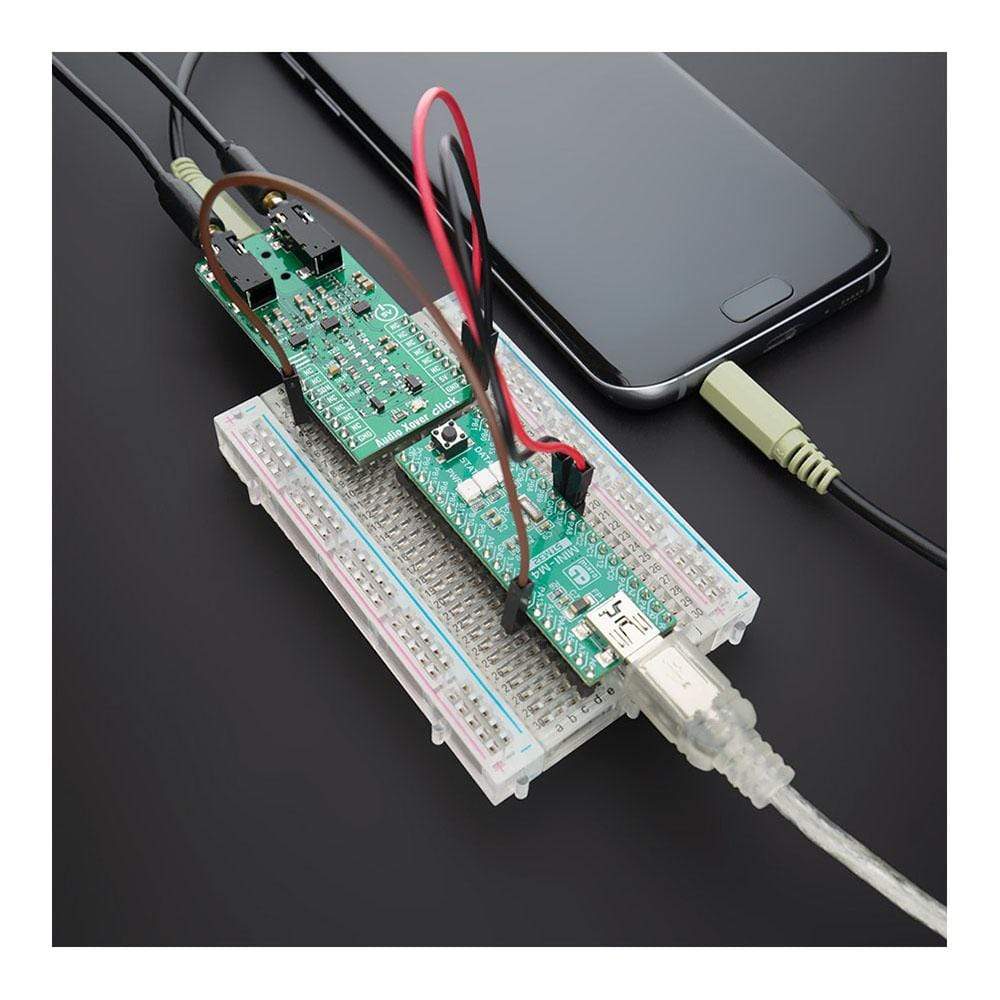
Overview
The Audio Xover Click Board™ is an analogue active crossover solution for two-way loudspeakers. The primary purpose of the crossover circuit in a loudspeaker is to split an incoming audio signal into frequency bands that are passed to the speaker or “driver” best suited. Audio Xover Click is based on Microchip’s MCP6H012 operational amplifier with rail-to-rail output operation, connected in configuration for 2nd order Butterworth filter for both low pass and high pass filters. With a frequency response independent of the dynamic changes in a driver's electrical characteristics and individual channel cutoff frequency selection, it's an excellent solution for crossover.
The Audio Xover Click Board™ is supported by a mikroSDK compliant library, which includes functions that simplify software development. This Click Board™ comes as a thoroughly tested product, ready to be used on a system equipped with the mikroBUS™ socket.
Downloads
Der Audio-Weiche Click Board™ ist eine analoge aktive Crossover-Lösung für Zweiwegelautsprecher. Der Hauptzweck der Crossover-Schaltung in einem Lautsprecher besteht darin, ein eingehendes Audiosignal in Frequenzbänder aufzuteilen, die an den am besten geeigneten Lautsprecher oder „Treiber“ weitergeleitet werden. Audio Xover Click basiert auf dem Operationsverstärker MCP6H012 von Microchip mit Rail-to-Rail-Ausgangsbetrieb, der in einer Konfiguration für Butterworth-Filter 2. Ordnung für Tiefpass- und Hochpassfilter angeschlossen ist. Mit einem Frequenzgang, der unabhängig von den dynamischen Änderungen der elektrischen Eigenschaften eines Treibers ist, und der Auswahl der Grenzfrequenz einzelner Kanäle ist es eine hervorragende Lösung für Crossover.
Das Audio Xover Click Board™ wird durch eine mikroSDK-kompatible Bibliothek unterstützt, die Funktionen enthält, die die Softwareentwicklung vereinfachen. Dieses Click Board™ ist ein gründlich getestetes Produkt und kann auf einem System verwendet werden, das mit der mikroBUS™-Buchse ausgestattet ist.
| General Information | |
|---|---|
Part Number (SKU) |
MIKROE-4104
|
Manufacturer |
|
| Physical and Mechanical | |
Weight |
0.02 kg
|
| Other | |
Country of Origin |
|
HS Code Customs Tariff code
|
|
EAN |
8606018717378
|
Warranty |
|
Frequently Asked Questions
Have a Question?
Be the first to ask a question about this.

